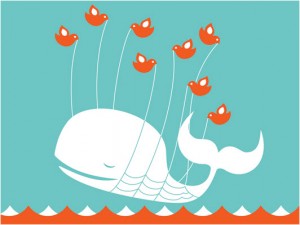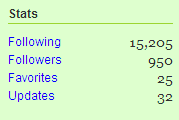Taxonomic analysis of Twitter users

My colleague and office neighbor whose name I will not mention asked me to advise him on the possible applications of Twitter for a content site. The question is relevant, especially in a business context. However, people seem to be looking for the commercial apps for this new blogger darling without knowing why and without setting goals. Before establishing a strategy, it is necessary to understand the dynamics and the different behaviors of Twitter users.
I will therefore attempt to classify the various behaviors among my followers and those I follow on Twitter. This work is totally empirical and is intended as a basis for reflection for all who want to benefit from its contribution to its Web strategy.
Small parenthesis : For those who do not know Twitter, I advise you to watch the excellent Common Craft video which explains how it works in plain English . There is also an article by the illustrious colleague JF Renaud which relates in a few points what Twitter is.
If I go by my sample of 65 people, there are 5 types of behavior on Twitter . I estimated the proportion of use by behavior.

- Those who talk about their emotions (15%). Although very introspective, this behavior is similar to Facebook's status, so much so that there is an application that allows you to synchronize updates made on Twitter to your Facebook.

- Those who discuss a topic (20%). I could compare it to discussions on a discussion board. One can easily observe the @ name in the message which acts as a response to the subjects initiated by the other interlocutor.

- Those who share links (45%). We can also relate this behavior to what is done on delicious or on digg without the aspect of voting. That being said, I would definitely see a delicious and twitter mash-up where people could publicly comment on the links they share. I would call it twilicious .

- Those who use it as news feeds (20%). They promote the latest posts from their blog or site, the latest hires or the activities in which they participate.

- Those who spam (very marginal). They follow you on Twitter without knowing why and have only one goal: you become their follower . We can recognize them with a high number of followed people, very few followers and very few updates. Notice to those interested, it doesn't really work and Twitter offers the possibility of blocking them.
You will understand that the same person can have more than one behavior and that they are not mutually exclusive.
The objective
We must consider Twitter in your marketing strategies for your site , your blog or in the promotion of an event. I see that as its main advantage. One can quickly communicate to a mass of people scoops or reflections on a subject. I hope for you that you have at least one communication or marketing person in your company who has an account on Twitter.
Challenges
It can be difficult or impossible to get your customers to contribute on Twitter. Twitterers are still marginal. They are typically bloggers, organizational leaders, or technology or tech-savvy firms .
The main challenge is also to have more followers than people you follow ( following ). Getting there requires being relevant, active and checking your address book for people who are likely to be Twittering. I would tell you that I am trying to reverse the trend.
By the way, I invite you to follow me on Twitter . 😉








